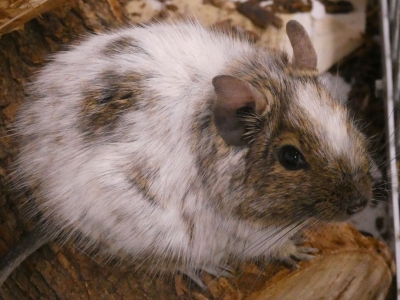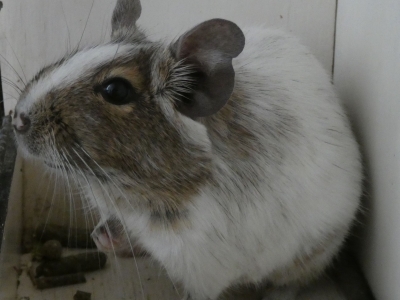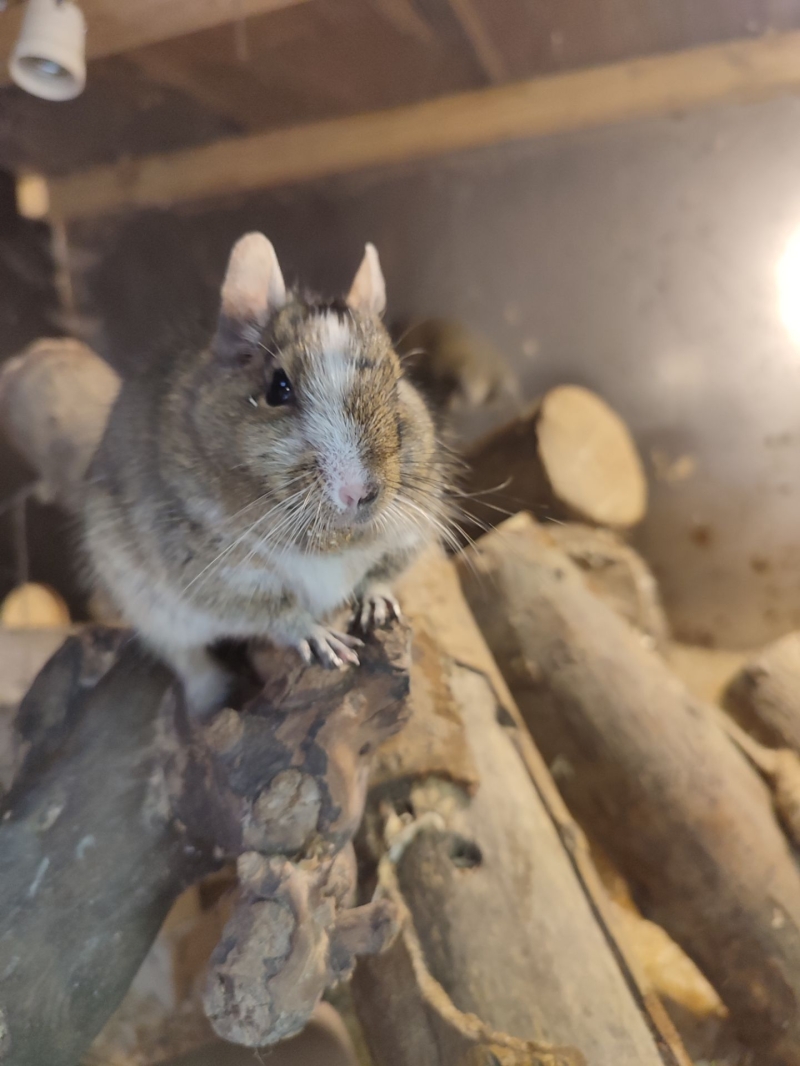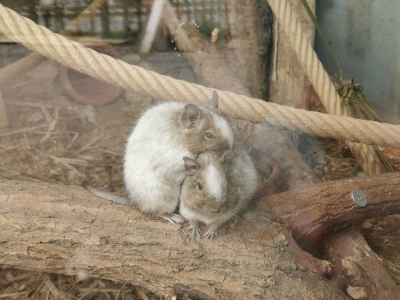Degu Octodon degus
Animals in our sanctuary
Rosita (female)

Rosita was found by people and brought to a vet. The degu is not a native species; it was probably dumped and abandoned by its previous owner or it escaped.
Lise (female)

Lise comes from a woman who kept several bird species and a degu. The animals were well cared for, but due to circumstances she had to part with them. Lise can now enjoy a new home in De Zonnegloed.
Appearance:
Degus are small rodents with a compact body and short, brown-grey fur that becomes thicker during colder seasons for extra insulation. They have large eyes, long whiskers, and a relatively long tail ending in a tuft of hair. Their bright orange teeth are a distinctive feature, typical of healthy rodents.
Behavior:
Degus are highly social animals that live in large groups in the wild. They are diurnal (active during the day) and spend much of their time digging, climbing, and interacting with others. They construct extensive underground burrow systems where they store food for times of scarcity. Degus communicate using a range of sounds, including high-pitched squeaks and low grumbles. Their curious and energetic nature keeps them constantly exploring their surroundings.
Diet:
As strict herbivores, degus feed exclusively on plant-based foods. In the wild, their diet consists mainly of:
- Grasses
- Seeds
- Grains
- Dry leaves and twigs
They are very prone to diabetes and must avoid sugary foods. A high-fiber, sugar-free diet is essential for their health and wellbeing.
Habitat and Distribution:
Degus are native to the Andes mountains in Chile, South America. They live on dry, rocky slopes with shrub-like vegetation. This terrain offers natural shelter and ideal conditions for digging their burrows. They are well adapted to arid climates and open landscapes.
Conservation Status:
According to the IUCN, the degu is classified as “Least concern” While they are not currently threatened, habitat loss and human activity could pose risks to their population in the future.
Adopt this Degu




